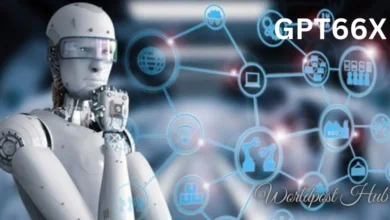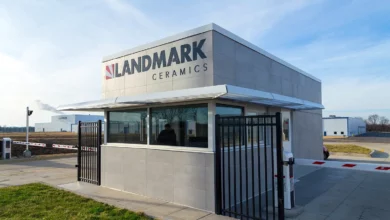Types of Renewable Energy Innovations

Solar panels:
Solar panels have become increasingly efficient and affordable in recent years, making them a viable option for homeowners and businesses alike. Solar panels can generate electricity from the sun, so you can power your home or appliances with clean, renewable energy.
Wind turbines:
Wind turbines can generate electricity from the wind, making them a great option for areas with consistent wind speeds. Wind turbines are becoming increasingly popular, and they are now a major source of renewable energy in many countries.
Hydropower:
Hydropower is a renewable energy source that uses the power of flowing water to generate electricity. Hydropower is a mature technology that has been used for centuries, and it is a reliable source of energy.
Geothermal energy:
Geothermal energy is a renewable energy source that uses the heat from the Earth’s core to generate electricity. Geothermal energy is a clean and efficient source of energy, but it is not widely available.
Ocean energy:
Ocean energy is a renewable energy source that uses the power of the ocean’s waves, tides, and currents to generate electricity. Ocean energy is a promising technology, but it is still in its early stages of development.
Biomass energy:
Biomass energy is a renewable energy source that uses organic matter to generate electricity. Biomass energy can be used to generate electricity from a variety of sources, including wood, crops, and waste.
Hydrogen fuel cells:
Hydrogen fuel cells are a type of clean energy technology that can generate electricity from hydrogen and oxygen. Hydrogen fuel cells are still in their early stages of development, but they have the potential to be a major source of renewable energy in the future.
Advanced battery storage:
Advanced battery storage technologies are making it possible to store renewable energy for later use. This is important because renewable energy sources, such as solar and wind, are intermittent. Advanced battery storage can help to smooth out the output of these sources and make them more reliable.
Smart grids:
Smart grids are power grids that use digital technology to monitor and control the flow of electricity. Smart grids can help to improve the efficiency of the grid and make it more reliable. They can also help to integrate renewable energy sources into the grid.
Distributed generation:
Distributed generation is the production of electricity at or near the point of consumption. Distributed generation can help to reduce reliance on centralized power plants and make the grid more resilient. It can also help to integrate renewable energy sources into the grid.
Solar panels:
Solar panels are becoming increasingly efficient and affordable, making them a viable option for homeowners and businesses alike. Solar panels can generate electricity from the sun, so you can power your home or appliances with clean, renewable energy.

Wind turbines:
Wind turbines can generate electricity from the wind, making them a great option for areas with consistent wind speeds. Wind turbines are becoming increasingly popular, and they are now a major source of renewable energy in many countries.
Hydropower:
Hydropower is a renewable energy source that uses the power of flowing water to generate electricity. Hydropower is a mature technology that has been used for centuries, and it is a reliable source of energy.
Geothermal energy:
Geothermal energy is a renewable energy source that uses the heat from the Earth’s core to generate electricity. Geothermal energy is a clean and efficient source of energy, but it is not widely available.
Ocean energy:
Ocean energy is a renewable energy source that uses the power of the ocean’s waves, tides, and currents to generate electricity. Ocean energy is a promising technology, but it is still in its early stages of development.
Biomass energy:
Biomass energy is a renewable energy source that uses organic matter to generate electricity. Biomass energy can be used to generate electricity from a variety of sources, including wood, crops, and waste.
Hydrogen fuel cells:
Hydrogen fuel cells are a type of clean energy technology that can generate electricity from hydrogen and oxygen. Hydrogen fuel cells are still in their early stages of development, but they have the potential to be a major source of renewable energy in the future
Advanced battery storage:
Advanced battery storage technologies are making it possible to store renewable energy for later use. This is important because renewable energy sources, such as solar and wind, are intermittent. Advanced battery storage can help to smooth out the output of these sources and make them more reliable.
Smart grids:
Smart grids are power grids that use digital technology to monitor and control the flow of electricity. Smart grids can help to improve the efficiency of the grid and make it more reliable. They can also help to integrate renewable energy sources into the grid
Distributed generation:
Distributed generation is the production of electricity at or near the point of consumption. Distributed generation can help to reduce reliance on centralized power plants and make the grid more resilient. It can also help to integrate renewable energy sources into the grid
Floating solar panels:
Floating solar panels are solar panels that are installed on water. Floating solar panels can be used to generate electricity in areas with limited land resources, such as lakes and reservoirs
Solar roads :
Solar roads are roads that are made with solar panels embedded in them. Solar roads can generate electricity while people are driving on them, and they can also help to reduce the heat island effect.
Vertical wind turbines:
Vertical wind turbines are wind turbines that are designed to be installed on tall buildings or other structures. Vertical wind turbines can generate electricity in areas with low wind speeds, and they can also help to reduce the amount of space that is needed for wind turbines
Microgrids:
Microgrids are small, independent power grids that can operate independently of the main power grid. Microgrids can be used to provide power to homes, businesses, and communities during power outages, and they can also be used to integrate renewable energy sources into the grid.
Biochar:
Biochar is a type of charcoal that is made from biomass. Biochar can be used as a soil amendment, and it can also be used to generate electricity. Biochar is a promising technology for storing carbon and reducing greenhouse gas emissions.
These are just a few of the many renewable energy innovations that are being developed. As these technologies continue to improve, they will play an increasingly important role in our energy future.





